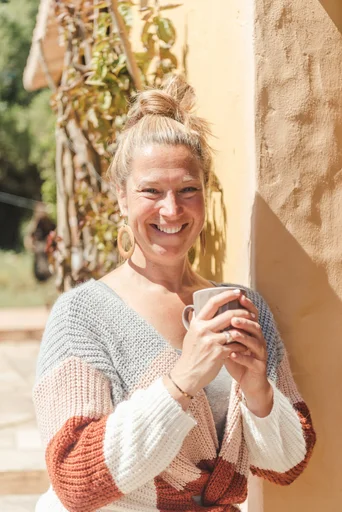8 Yoga Poses for Better Sleep

Why Yoga Before Bed Can Lead to Better Sleep
Are you tired of tossing and turning at night, struggling to get the rest your body craves? Incorporating yoga into your bedtime routine might just be the answer you've been searching for. Scientific research has shown that yoga can have a profound impact on sleep quality, making it an effective tool for achieving better sleep.
The Science of Sleep and Relaxation
Yoga's ability to induce relaxation is well-documented. By engaging in gentle movement and meditative practices, such as yoga poses, individuals can lower stress levels and calm their nervous systems. This, in turn, prepares the body and mind for a restful night's sleep.
The Benefits of Yoga for Better Sleep
Studies have revealed that consistent yoga practice can lead to significant improvements in sleep patterns. For instance, a Harvard study on insomnia found that individuals who practiced yoga for just eight weeks experienced longer and better-quality sleep compared to those who did not engage in this mindful practice. Additionally, yoga has been linked to reduced stress, anxiety, and depression in women, further emphasizing its potential to enhance overall well-being.
Incorporating a relaxing yoga routine into your nightly schedule may be particularly beneficial if you struggle with insomnia or find it challenging to achieve deep, restorative sleep. Long-term yoga practice has been associated with improved mindfulness, increased melatonin levels, and reduced sleep disturbances.
So why wait any longer? Embrace the power of yoga before bed and take the first step towards experiencing the rejuvenating benefits of enhanced sleep quality.
The Power of Breath Work and Relaxation
Are you ready to take your journey to better sleep a step further? Let's delve into the transformative power of breath work and relaxation techniques. Incorporating these practices into your nightly routine can pave the way for a more restful and rejuvenating slumber.
Incorporating Breath Work into Your Routine
Breath work, also known as pranayama in the yoga tradition, involves conscious manipulation of the breath to achieve specific outcomes. One simple yet effective technique is the Ocean Breath, which entails breathing deeply and audibly through the nose, creating a soothing sound reminiscent of ocean waves. This rhythmic breathing pattern has been proven to calm the mind and reduce stress levels, making it an ideal addition to your pre-sleep ritual.
Research from a 2018 study published in Front Psychiatry supports breathwork techniques as an effective aid for insomnia. The study found that slow breathing techniques combined with relaxation techniques and improved sleep hygiene were able to help those who had been struggling. Additionally, a 2019 study compared slow-paced breathing intervention with social media use before bed and discovered that breathwork significantly enhanced subjective sleep quality and cardiac vagal activity.
Incorporating breath work into your nightly routine doesn't have to be complicated. Find a comfortable seated position or even try incorporating it into Chair Pose during your evening yoga practice. By dedicating just a few minutes to this intentional practice, you can create a sense of calm that sets the stage for deep relaxation.
How Relaxation Techniques Enhance Sleep Quality
Relaxation techniques play a pivotal role in preparing both the body and mind for restorative sleep. Engaging in practices such as guided meditation, progressive muscle relaxation, or gentle stretching can signal to your nervous system that it's time to unwind. These activities help release tension from your muscles, slow down racing thoughts, and promote a tranquil state conducive to falling asleep easily.
A July 2020 study published in the American Journal of Nursing Science found that daily breathing exercises could help hospital patients struggling with sleep disturbance. The majority of patients also saw a decrease in delirium as their sleep quality improved. Furthermore, mindfulness activities like breathwork have been shown to improve sleep quality among older adults with sleep disturbances according to a 2015 study published by JAMA Internal Medicine.
By embracing these powerful tools of relaxation before bedtime, you can cultivate an environment where deep, uninterrupted sleep becomes not just possible but inevitable.
1. Legs Up The Wall Pose (Viparita Karani)

Are you ready to discover a restorative yoga pose that not only benefits your legs but also promotes overall relaxation, making it an ideal addition to your bedtime routine? Let's explore the soothing and calming Legs Up The Wall pose, also known as Viparita Karani.
Why This Pose?
The Legs Up The Wall pose offers a myriad of benefits for both the body and mind. By elevating your legs above your heart, this gentle inversion posture promotes blood flow back to the heart, calming the nervous system and inducing a sense of tranquility. This calming effect can help calm your mind and prepare you for a night of deep, restorative sleep. Additionally, this pose can provide relief from lower back tension, soothe muscle cramps, and contribute to an overall sense of well-being.
How to Perform Legs Up The Wall
Find an open space near a wall and place a folded blanket or yoga mat perpendicular to the wall.
Sit sideways with your right hip and shoulder touching the wall.
Gently turn your body as you extend your legs up the wall while lowering your torso onto the floor.
Adjust your position so that your sit bones are close to the wall and allow yourself to settle into this restful posture.
Soften your gaze or close your eyes, bringing awareness to each inhale and exhale as you focus on releasing tension from your body.
As you lay in this restful pose, take deep breaths in through your nose and exhale slowly through pursed lips, allowing yourself to fully relax into the posture.
By incorporating the Legs Up The Wall pose into your nightly routine, you can bring about a profound sense of calmness and prepare both your body and mind for a night of rejuvenating sleep.
2. Standing Half Forward Bend (Ardha Uttanasana)
The Importance of Forward Bends
Incorporating forward bends into your yoga practice can have a profound impact on your sleep quality. Standing half forward bend, also known as Ardha Uttanasana, is particularly beneficial for promoting relaxation and preparing the body for restorative sleep.
The gentle forward bend in Ardha Uttanasana helps release tension from the back and hamstrings, areas where many people carry stress and tightness. By stretching these areas, you can create a sense of ease in the body, making it easier to unwind before bedtime. This release of tension in the body can contribute to a more relaxed state, setting the stage for a night of deep and restful sleep.
Mastering Ardha Uttanasana
To practice Ardha Uttanasana effectively, follow these instructions:
Begin standing tall with your feet hip-width apart.
As you exhale, hinge at your hips and fold forward from the waist, keeping your back flat.
Allow your hands to rest on your shins or the floor, depending on your flexibility.
Engage your thigh muscles to support the stretch in the hamstrings while maintaining length in the spine.
Take slow, deep breaths as you hold this pose for several breath cycles, allowing yourself to fully experience the benefits of this gentle forward bend.
When practicing Ardha Uttanasana regularly as part of your bedtime routine, you can cultivate a sense of calmness in both mind and body, paving the way for improved sleep quality and overall well-being.
3. Reclining Bound Angle Pose (Supta Baddha Konasana)
Opening Your Heart and Hips for Better Sleep
Are you ready to explore a deeply restorative yoga pose that not only promotes relaxation but also opens your heart and hips, paving the way for a night of rejuvenating sleep? Let's delve into the soothing and calming Reclining Bound Angle pose, also known as Supta Baddha Konasana.
This gentle yet powerful pose can make you relax in general by releasing tension from your hips and groin area. By opening up these areas, the pose allows for improved blood circulation and encourages a sense of ease throughout your body. The act of reclining in this posture can help calm your mind, reduce stress, and prepare you for a night of deep, restorative sleep.
Getting into Supta Baddha Konasana
To practice Supta Baddha Konasana effectively, follow these detailed steps:
Begin by sitting on the floor with your knees bent and feet flat on the ground.
Gently bring the soles of your feet together and allow your knees to fall out to the sides.
Slowly lower yourself down onto your back while supporting the weight of your legs with pillows or bolsters if needed.
Find a comfortable position where you can fully relax into this restful posture, allowing yourself to soften into the support beneath you.
Close your eyes and focus on taking slow, deep breaths as you bring awareness to the sensations in your body, particularly around your heart and hips.
As you lay in this nurturing pose, feel a sense of openness in both your heart center and hip region. Embrace this feeling as it prepares you for a night of deep relaxation and rejuvenation.
4. Corpse Pose (Savasana)

The Ultimate Relaxation Pose
Are you ready to experience the ultimate relaxation and prepare your body for a night of rejuvenating sleep? Look no further than the Corpse Pose, also known as Savasana. This deeply restorative yoga pose holds the key to unlocking a state of profound tranquility, making it an essential addition to your bedtime routine.
Savasana is often referred to as yogic Nidra, a form of deep yogic sleep that can promote quality and deep sleep. Research has shown that this pose can help calm the mind and body, providing better sleep at night and potentially decreasing the need for doctor’s visits or reliance on sleeping pills. By incorporating this gentle yet powerful pose into your nightly routine, you can create an environment conducive to achieving a state of deep relaxation essential for improved sleep quality.
Why Savasana is Essential for Better Sleep
Practicing Savasana regularly offers a multitude of benefits that directly contribute to better sleep quality. It has been found that this pose can lower blood pressure and reduce the risk of heart disease, making it particularly valuable for individuals seeking to improve their overall cardiovascular health. Additionally, Savasana has been shown to aid in the recovery and healing process for individuals with chronic illnesses, highlighting its potential to support holistic well-being.
By dedicating time to perfecting the Corpse Pose, you are not only setting the stage for enhanced sleep but also fostering an environment where your body can undergo essential healing processes while you rest.
Perfecting the Corpse Pose
To fully embrace the transformative power of Savasana, follow these techniques for deeper relaxation:
Find a quiet, comfortable space where you can lay down on your back without any distractions.
Close your eyes and allow your arms and legs to naturally fall open, releasing any tension in your muscles.
Take slow, deep breaths using Ujjayi breath – a technique that involves gently constricting the back of your throat while breathing in and out through your nose.
Focus on each part of your body individually, consciously relaxing every muscle from head to toe.
Allow yourself to enter a state of complete surrender, letting go of any lingering thoughts or worries as you sink deeper into relaxation.
By mastering these techniques and embracing the restorative power of Savasana, you can create an optimal environment for achieving deep, restful sleep night after night.
Making Yoga a Nightly Routine
Building a Habit for Healthier Nights
Are you ready to transform your nights and experience the rejuvenating benefits of enhanced sleep quality? Establishing a nightly yoga routine can be the key to unlocking a restful and restorative slumber. Research has consistently shown that over 55% of individuals who practice yoga have reported significant differences in their sleep before and after incorporating yoga into their nightly rituals. Additionally, numerous studies have highlighted the positive effects of practicing yoga on sleep quality, with findings demonstrating improved overall life quality and better sleep patterns in both men and women.
To make yoga a nightly recipe for better sleep, consider setting aside a dedicated space in your home where you can practice without distractions. This space should be calming and conducive to relaxation, allowing you to fully immerse yourself in your pre-sleep ritual. Incorporate soothing elements such as dim lighting, comfortable props like bolsters or blankets, and perhaps even gentle background music to enhance the tranquil atmosphere.
Consistency is key when it comes to establishing a bedtime yoga routine. Aim to practice at the same time each night, gradually easing into your chosen poses while focusing on intentional breathing and mindful movements. By creating this habit for healthier nights, you can pave the way for improved sleep hygiene and overall wellness.
Your Path to Better Sleep Starts Tonight
Tonight marks the beginning of your journey towards achieving restful nights filled with deep, rejuvenating sleep. Embrace this opportunity to share this page with others who are seeking helpful tips for enhancing their sleep quality through yoga. Together, let's take proactive steps towards prioritizing our well-being by making nightly yoga an integral part of our lives.
See Also
Top Yin Yoga Poses for Improved Sleep - Yoga Magazine
Seven Easy Methods for Discovering Peace | Yoga Techniques for Anxiety
Fifteen Wellness Advantages of Yoga for Elderly Individuals
Prenatal Yoga: 5 Poses to Release Psoas and Alleviate Lower Back Discomfort
We bring back the importance of initiation into womanhood by Roos-Veerle Krijnen & Ella-June Henrard
Welcome to the Women’s Initiation Retreat by Naked Truth Retreats, a transformative journey into the depths of your True Feminine Nature. This retreat, scheduled from 17th to 24th August 2024 in Portugal, invites you to remember the sacredness and wholeness of your being.
Roos-Veerle Krijnen & Ella-June Henrard



